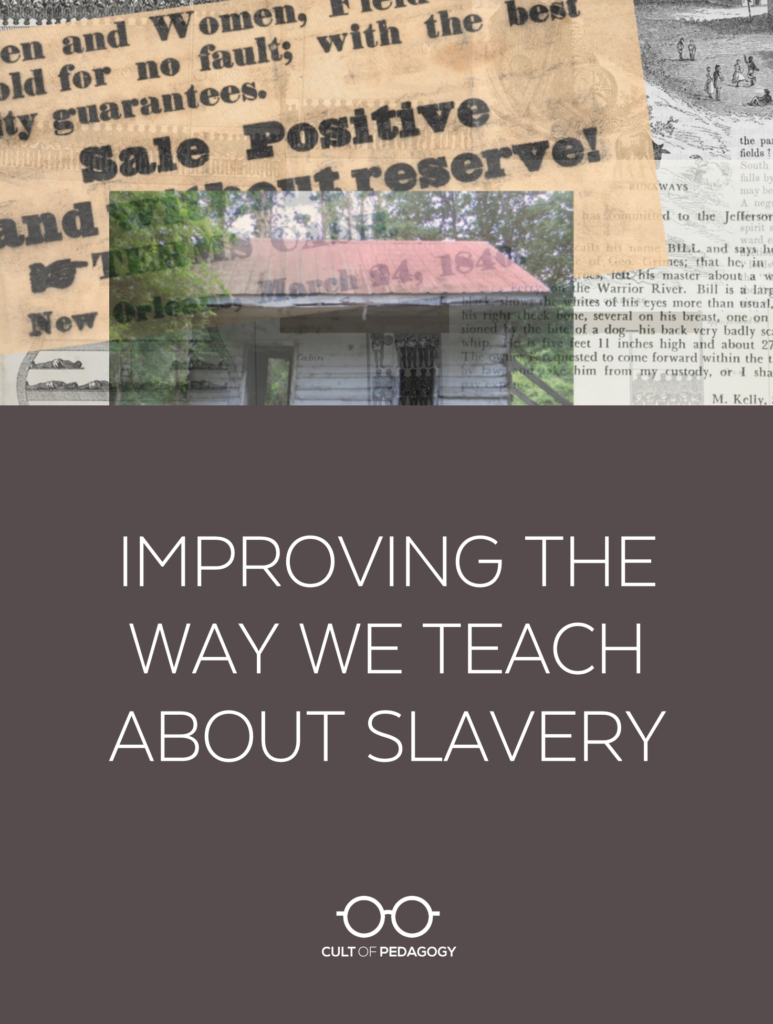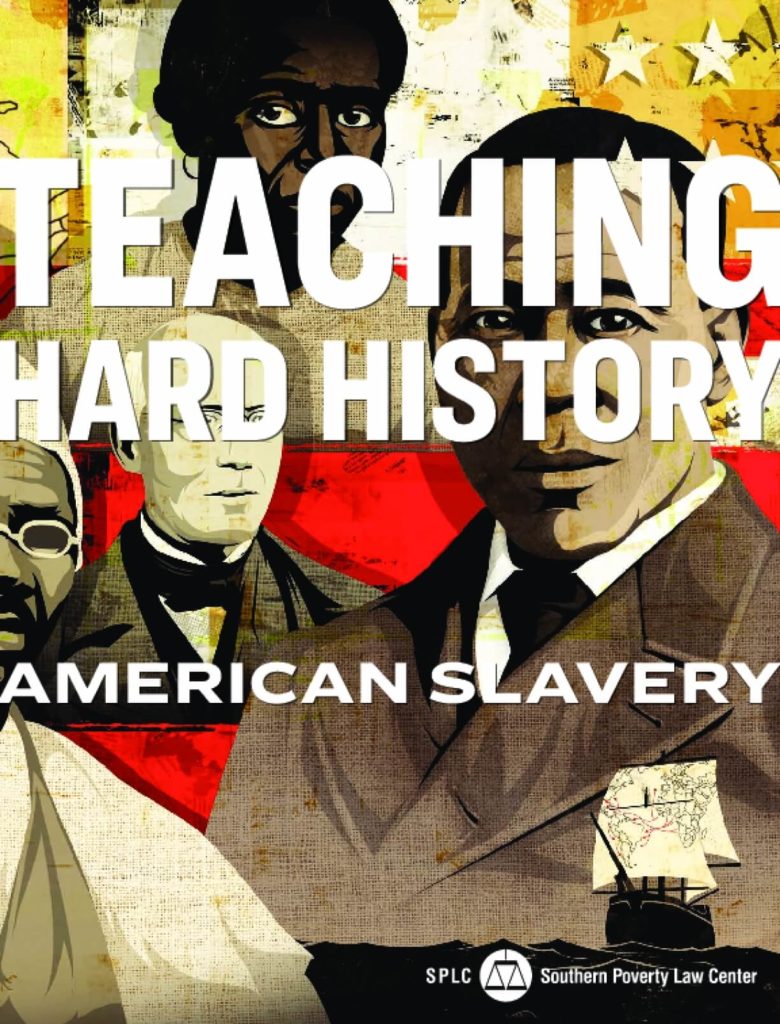
Listen to my interview with Hasan Kwame Jeffries (transcript):
Sponsored by Peergrade and Microsoft Inclusive Classroom
Every couple of weeks, I hear someone repeat some version of this sentiment: “Slavery ended in 1865. Get over it.”
And although I know this claim is riddled with problems, my ability to adequately refute it is limited. That’s because my education on American slavery, its causes, and its aftermath, consisted of answering end-of-chapter textbook questions in grades 5, 8, and 11. We “covered” the topic, took a test where we matched Harriet Tubman, Abraham Lincoln, and Dred Scott to their one-line descriptions, then moved on. It was treated as a period of bad behavior in our country’s history, behavior that the “good guys” ultimately put a stop to, and since then, things have been much better. The end.
In the years that followed, I built a kind of patchwork understanding of slavery through books, college classes, and films. While every new piece has refined and expanded my understanding of the massive role slavery has played in our history and our contemporary life, the pieces still feel discrete, never stitched together into a cohesive whole. I feel like I’m still lacking a lot of information and insight. Still, if I’d never taken that initiative on my own, if I’d stopped learning at graduation, my knowledge of slavery might very well be limited to “Slavery ended in 1865.”
And that’s where a lot of people are.
Earlier this year, the Southern Poverty Law Center published a report about how the topic of slavery is being taught in the United States. The report reveals that most students have significant knowledge gaps when it comes to some of the most basic facts about slavery, and in many states, social studies standards related to slavery are incredibly limited in their scope. While teachers feel that slavery is an important topic to teach, many of them don’t feel that they are adequately prepared or supported to do a thorough job.
To address these problems, the Southern Poverty Law Center, through its website, Teaching Tolerance, has put together a comprehensive Framework for Teaching American Slavery, an outstanding collection of resources and guidelines for history teachers. The framework provides a list of 10 key concepts and 21 summary objectives to help you and your students give American slavery a thorough, thoughtful examination. It also includes over 100 primary source texts and a set of sample Inquiry Design Models—teaching plans that actually show you how to walk students through an inquiry of slavery with guiding questions, analysis of primary sources, and performance tasks to synthesize what they’ve learned.
Another piece of the framework is the Teaching Hard History Podcast, which is produced for teachers. Every episode looks at the teaching of slavery from a slightly different angle, with topics like Slavery in the Supreme Court, Slavery and the Northern Economy, and Slave Resistance, with each topic explored by one prominent history scholar. If you teach history, you need to make time to listen to this incredible podcast—not only will it deepen your understanding of American Slavery, it will give you so many insights on how to teach difficult topics.

Hasan Kwame Jeffries
The podcast is hosted by Dr. Hasan Kwame Jeffries, Associate Professor of History at The Ohio State University and chair of the Teaching Hard History Advisory Board. I recently talked with Dr. Jeffries about the Teaching Hard History framework. You can listen to our whole conversation in the player above or read a full transcript, also linked above.
“Why do we call it ‘hard history’?” Jeffries asked. “There are a number of phenomena in the American experience that are difficult for Americans to talk about, to teach about, to think about, and almost all of them certainly revolve around race and racism, and slavery is really foremost among those. So the ‘hard history’ is slavery itself, because it really is something that we have found, as Americans, is hard to talk about in our everyday lives, hard to think about, and certainly hard to teach in the classroom setting.”
The curriculum not only points out what we’ve been getting wrong—things like not focusing enough on the inhumanity of the system of slavery, or limiting its scope to the American South—it also describes what we should be doing to get it right. In particular, the podcast does a wonderful job of going in-depth about teaching practices.
At this time in history, when racism and social divisions have risen so sharply onto our daily landscapes, high-quality education on these issues is more important than ever. Jeffries points to just one example of the gaps in our understanding: “How do you wind up with a Charlottesville of the last year and people talking about Confederate monuments and white supremacy and this, that, and the other, without understanding its roots in American slavery, and the birth of white supremacy in American ideology to justify slavery and then to justify Jim Crow, and the emergence of these Confederate monuments not in 1865 but in 1915 and 1960 as African Americans were fighting against white supremacy and Jim Crow? This is hard because it’s so relevant to today.”
Anyone who teaches history—even indirectly through literature—will be far better equipped to teach about slavery after exploring these materials. If more schools use them, and more students are exposed to the complex relationship our country has always had with slavery, we might get to a place where we have more elevated conversations about race, and people stop saying “Get over it.” 
Join our mailing list and get weekly tips, tools, and inspiration that will make your teaching more effective and fun. You’ll get access to our members-only library of free downloads, including 20 Ways to Cut Your Grading Time in Half, the e-booklet that has helped thousands of teachers save time on grading. Over 50,000 teachers have already joined—come on in!
